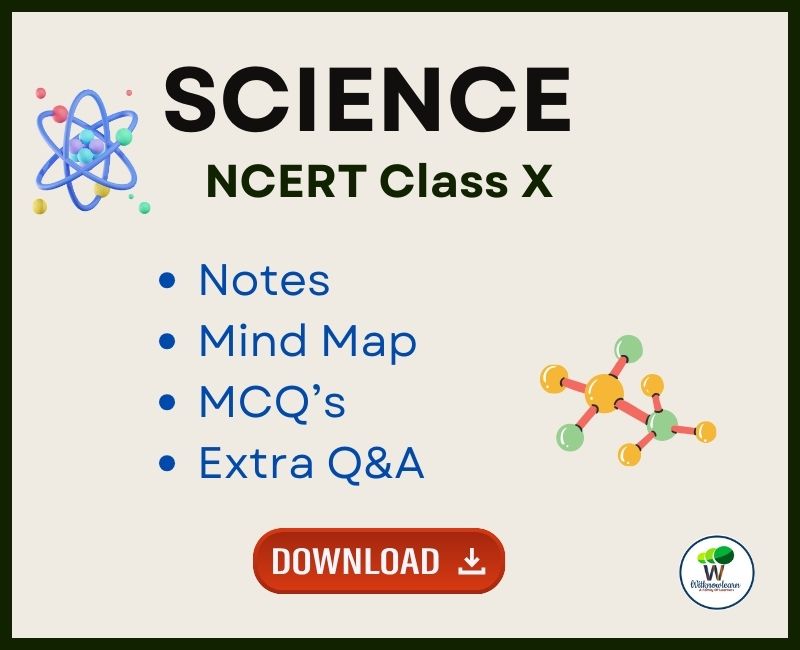Chemical Reactions And Equations Class 10 CBSE Notes, Mind Map And MCQ
Are you struggling to understand chemical reactions and equations in your CBSE Class 10 Science curriculum? Look no further! These comprehensive notes, mind maps, and MCQs will guide you through the intricacies of this subject with ease.
Click here to download Chemical Reactions and Equations class 10 worksheet with Answer Including MCQ
In this article, we have compiled all the essential information you need to ace your exams. Whether you're learning about the different types of chemical reactions or how to balance equations, these notes will provide you with a solid foundation. Through the mind maps, you will visually grasp the concepts, making it easier to remember and comprehend.
And to test your knowledge, we have included multiple-choice questions that will help you assess your understanding and identify any areas that need further revision. Our goal is to simplify the complex world of chemical reactions and equations, ensuring that you grasp the concepts effectively. With these resources at your fingertips, you'll be able to excel in your CBSE Class 10 Science exams. So let's dive in and unlock the secrets of chemical reactions and equations!
CBSE Class 10 Science Chapter 1, titled Chemical Reactions and Equations, is an essential part of the Class 10 curriculum. This chapter focuses on the fundamental principles and concepts related to chemical reactions and equations.
In Class 10 Chapter 1 Chemistry, students are introduced to the world of chemical reactions and the importance of balancing chemical equations. This chapter acts as a foundation for understanding various chemical reactions that occur in our daily lives.
The study of Class 10 Chapter 1 Science helps students develop a scientific approach to understanding chemical reactions. It enables them to comprehend the different types of reactions, such as combination, decomposition, displacement, and double-displacement reactions.
To enhance the understanding of Class 10 ch 1 science, students can refer to comprehensive notes tailored specifically for this chapter. These notes provide a concise summary of the key concepts, definitions, and examples related to chemical reactions and equations. Students can use these notes as a reference while reviewing or revising the chapter's content.
Another useful tool for learning this chapter is a mind map. A Chemical Reactions and Equations class 10 mind map offers a visual representation of the main topics, subtopics, and their interrelationships. It can serve as an effective study aid for students to organize and assimilate the complex information associated with chemical reactions and equations.
To test their proficiency in the topic, students can take advantage of the Chemical Reactions and Equations class 10 mcq. These multiple-choice questions assess their understanding of the chapter's concepts and their ability to apply them in different scenarios. MCQs provide an opportunity for self-assessment, identify areas of improvement, and reinforce learning.
In conclusion, CBSE Class 10 Science Chapter 1, Chemical Reactions and Equations, is crucial for students' understanding of chemical reactions. By utilizing resources such as comprehensive notes, mind maps, and MCQs, students can enhance their knowledge and excel in this fundamental topic.
Types of Chemical Reactions
Chemical reactions are the processes where chemical substances change into different substances. There are several types: Synthesis, where two or more elements or compounds combine to make a more complex substance. Decomposition breaks down compounds into simpler substances. Single replacement is when one element replaces another in a compound. In double replacement, parts of two compounds swap places. Finally, combustion occurs when a substance reacts with oxygen, often producing energy as heat and light.
Balancing Chemical Equations
Balancing chemical equations ensures the same number of each atom appears on both sides of the equation. This is because matter cannot be created or destroyed. To balance an equation, adjust the numbers of each substance so that the number of atoms for each element is equal on both sides. This helps us understand the proportions in which chemicals react.
Chemical Equations and Stoichiometry
Stoichiometry is the study of the amounts of substances involved in chemical reactions. It uses chemical equations to calculate quantities like the amounts of reactants needed or products formed. Understanding stoichiometry is essential in chemistry for predicting the yields of reactions and determining the right proportions of reactants.
Examples of Chemical Reactions and Equations
Common examples include the reaction of vinegar and baking soda, which produces carbon dioxide gas. Rusting of iron is another, where iron reacts with oxygen and water. Combustion of fuels like wood or gasoline, which produce carbon dioxide and water, is also a familiar chemical reaction.
Importance of Chemical Reactions and Equations in Daily Life
Chemical reactions and equations are crucial in daily life. They explain processes like cooking, where heat causes chemical changes in food. They're also key in understanding how medicines work in the body, and in the manufacturing of various products like plastics and cosmetics.
CBSE Class 10 Notes on Chemical Reactions and Equations
For students studying under the CBSE Class 10 curriculum, understanding chemical reactions and equations is fundamental. They learn about different types of reactions, how to balance equations, and the principles of stoichiometry, which are essential concepts in chemistry.
Mind Map for Understanding Chemical Reactions and Equations
Creating a mind map helps in understanding chemical reactions and equations. Start with a central idea like 'Chemical Reactions' and branch out into types, examples, laws governing them, and their importance. This visual representation aids in easier recall and understanding.
Multiple-choice Questions (MCQs) on Chemical Reactions and Equations
MCQs are a great way to test understanding. They cover topics like identifying reaction types, predicting products of reactions, and applying the concept of stoichiometry. These questions encourage critical thinking and application of knowledge.
Conclusion
Chemical reactions and equations are fundamental concepts in chemistry. They explain how substances interact and change, impacting everything from industrial processes to biological functions. Understanding these concepts is crucial for students, as it lays the groundwork for more advanced studies in chemistry and related Fields.






